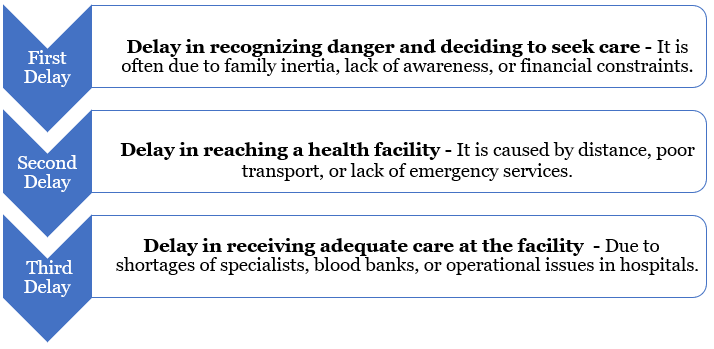7667766266
enquiry@shankarias.in
Why in the news?
What is a maternal death?
Status of MMR in India |
|
What are the medical causes of maternal deaths in India?
What are the government initiatives?
|
The Kerala model of a Confidential Review of Maternal deaths |
|
What are the challenges in reducing maternal mortality?
 What lies ahead?
What lies ahead?
Reference